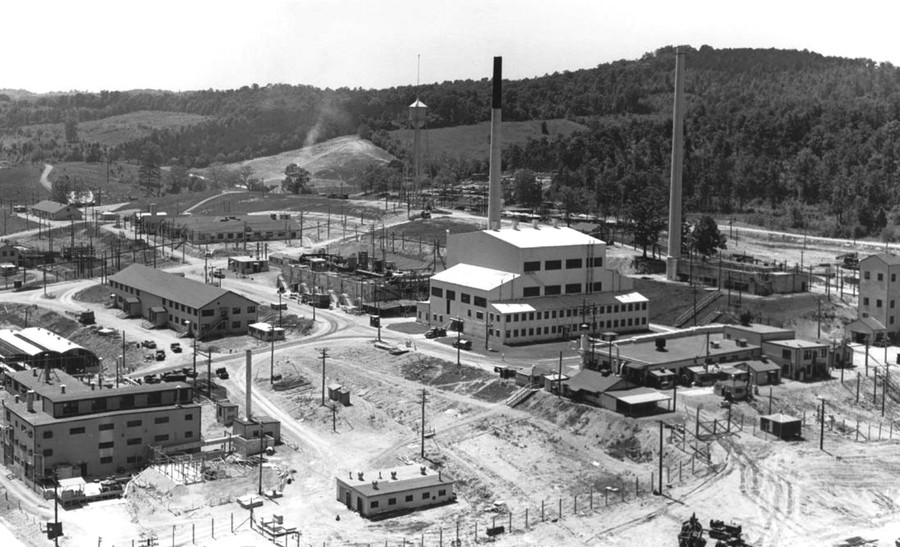Manhattan Project Signature Facilities
X-10 Graphite Reactor, Oak Ridge, Tennessee

When President Roosevelt in December 1942 authorized the Manhattan Project, the Oak Ridge site in eastern Tennessee had already been obtained and plans laid for an air-cooled experimental pile, a pilot chemical separation plant, and support facilities. The X-10 Graphite Reactor, designed and built in ten months, went into operation on November 4, 1943. The X-10 used neutrons emitted in the fission of uranium-235 to convert uranium-238 into a new element, plutonium-239.
The reactor consists of a huge block of graphite, measuring 24 feet on each side, surrounded by several feet of high-density concrete as a radiation shield. The block is pierced by 1,248 horizontal diamond-shaped channels in which rows of cylindrical uranium slugs formed long rods. Cooling air circulated through the channels on all sides of the slugs. After a period of operation, operators pushed fresh slugs into the channels from the face of the pile and the irradiated slugs would fall from the back wall through a chute into an underwater bucket. Following weeks of underwater storage to allow for decay in radioactivity, the slugs were delivered to the chemical separation building.
The X-10 Graphite Reactor supplied the Los Alamos lab with the first significant amounts of plutonium. Fission studies of these samples from the X-10 heavily influenced bomb design. The X-10 chemical separation plant also proved the bismuth phosphate process that was used in the full-scale separation facilities at Hanford. Finally, the X-10 provided invaluable experience for engineers, technicians, reactor operators, and safety officials who then moved on to Hanford. A National Historic Landmark, the control room and reactor face are accessible to the public.
Source: Department of Energy's Manhattan Project "Signature Facilities"